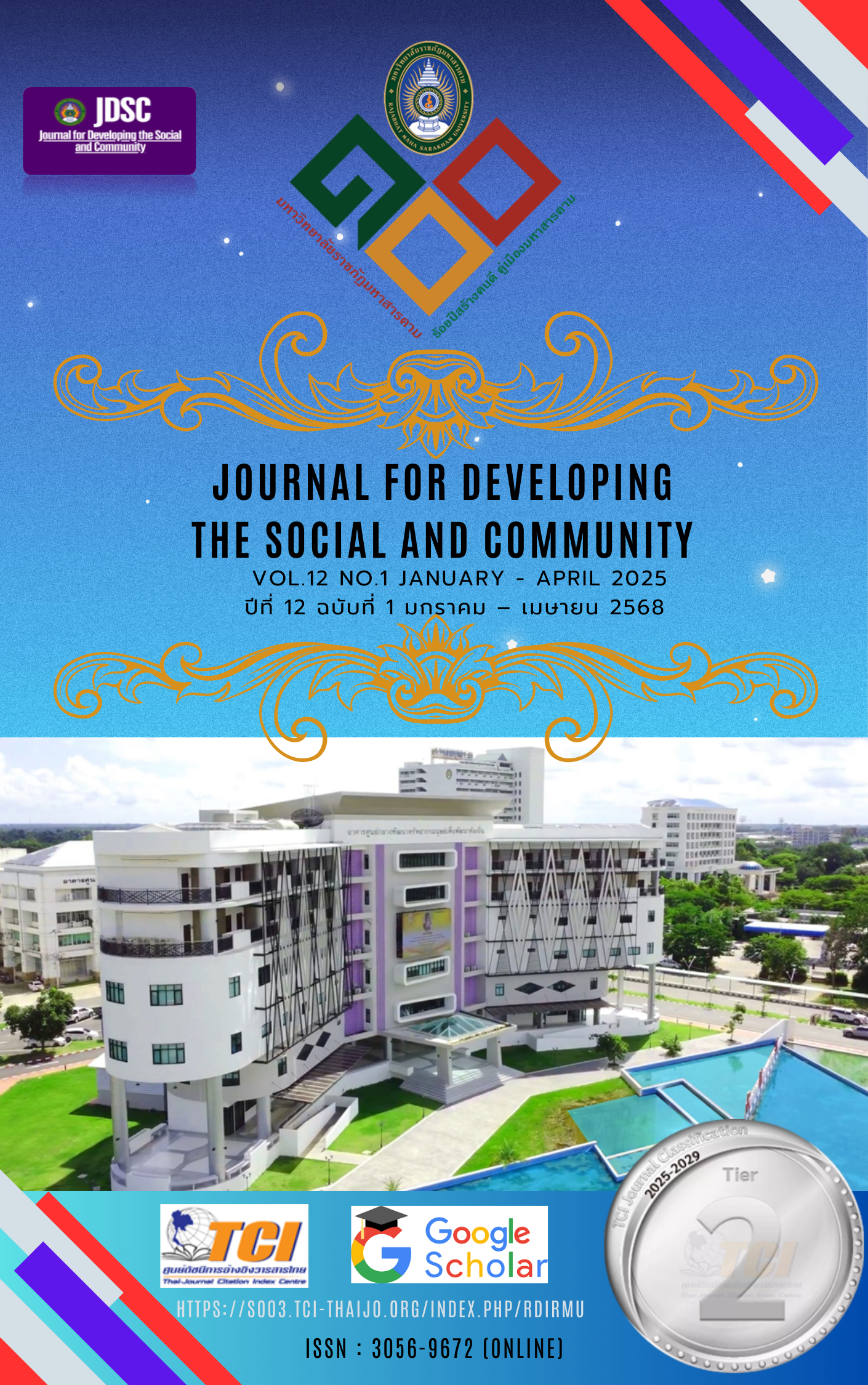Digital Public Administration: A Scenario Model for Future Transformation
Keywords:
Digital Public Administration, A Scenario Model, Future TransformationAbstract
Background and Objectives: Digital public administration plays an important role in transforming public administration by leveraging technology to improve service delivery, enhance transparency, and promote greater public participation. The introduction of digital platforms enables governments to streamline work processes, reduce bureaucratic inefficiencies, and provide services that are more accessible and responsive to public needs. This article presents a digital public administration model scenario for the transition to the future.
Research Methodology: The author uses a documentary research method, conducts content analysis, and synthesizes elements with a descriptive presentation.
Results: Digital public administration model scenario for the transition to the future consists of 1) Digital Transformation of Government Operations, 2) Digital Public Services, 3) Digital Governance and Transparency, 4) Capacity Building for Civil Servants, 5) Cybersecurity and Privacy Management, 6) Innovation and International Collaboration, and 7) Digital Strategies and Policies.
Conclusion: Digital government management is the integration of digital technologies into government processes to increase efficiency, transparency, and accessibility of public services, including the use of digital platforms for e-government services, which allow citizens to interact with government agencies online and enable governments to streamline processes, reduce bureaucratic procedures, and provide services that are more responsive to citizens.
References
กระทรวงเทคโนโลยีสารสนเทศและการสื่อสาร. (2559). แผนพัฒนาดิจิทัลเพื่อเศรษฐกิจและสังคม. กรุงเทพฯ: กระทรวงเทคโนโลยีสารสนเทศและการสื่อสาร.
Aichholzer, G., & Schmutzer, R. (2016). E-Government and Organizational Change. Springer.
Alvarez, R. (2020). Digital Government and Transformation. Journal of Public Administration, 44(3), 309-327.
Bertot, J. C., Jaeger, P. T., & Grimes, J. M. (2010). Using ICTs to create a culture of transparency: E-government and social media as openness and anti-corruption tools for societies. Government Information Quarterly, 27(3), 264-271.
Bharadwaj, A., El Sawy, O. A., Pavlou, P. A., & Venkatraman, N. V. (2013). Digital business strategy: Toward a next-generation of insights. MIS Quarterly, 37(2), 471-482.
Brynjolfsson, E., & McAfee, A. (2017). Machine, platform, crowd: Harnessing our digital future. W. W. Norton & Company.
Castells, M. (2009). Communication Power. Oxford University Press.
Cavoukian, A. (2010). Privacy by design: The seven foundational principles. Information and Privacy Commissioner of Ontario.
Cohen, S. (2017). Digital Governance and Cybersecurity Risks. Government Technology Review, 18(2), 78-85.
Cordella, A., & Bonina, C. M. (2012). A public value perspective for ICT-enabled public sector reforms: A theoretical reflection. Government Information Quarterly, 29(4), 512-520.
Davenport, T. H., & Ronanki, R. (2018). Artificial intelligence for the real world. Harvard Business Review, 96(1), 108-116.
Dawes, S. S. (2008). The Evolution and Continuing Challenges of E-Governance. Public Administration Review, 68(1), 1-14.
European Commission. (2020). General Data Protection Regulation (GDPR). Retrieved from https://ec.europa.eu.
Fagerberg, J. (2018). Mobilizing innovation for sustainability transitions: A comment on transformative innovation policy. Research Policy, 47(9), 1568-1576.
Heeks, R. (2001). Building E-Government in Developing Countries. Journal of Information Technology, 16(2), 101-112.
Janssen, M., & Helbig, N. (2018). Innovating and changing the policy cycle: Policy-makers be prepared! Government Information Quarterly, 35(4), S99-S105.
Janssen, M., & Van der Voort, H. (2016). Adaptive governance: Towards a stable, accountable, and responsive government. Government Information Quarterly, 33(1), 1-5.
Kettunen, P., & Kallio, J. (2020). Digital Government as a Tool for Innovation in the Public Sector. International Journal of Public Sector Management, 33(5), 531-548.
Layne, K., & Lee, J. (2001). Developing fully functional E-government: A four stage model. Government Information Quarterly, 18(2), 122-136.
Lips, M. (2016). The Digital Government and Legal Issues. Public Policy & Administration, 31(4), 112-126.
Meijer, A. (2015). E-governance innovation: Barriers and strategies. Government Information Quarterly, 32(2), 198-206.
Mergel, I. (2016). Digital Governance and Data-Driven Decision Making. Public Administration Review, 76(4), 555-567.
Mergel, I., Edelmann, N., & Haug, N. (2019). Defining digital public administration and explaining how to build it. Governance, 32(4), 565-580.
Norris, P. (2001). Digital Divide: Civic Engagement, Information Poverty, and the Internet Worldwide. Cambridge University Press.
OECD. (2016). Digital Government Strategies for Transforming Public Services. OECD Publishing.
OECD. (2019). Enhancing innovation and collaboration in a globalized world. OECD Publishing.
OECD. (2019). Public service leadership and capability. OECD Publishing.
OECD. (2020). Going digital: Shaping policies, improving lives. OECD Publishing.
Scholta, H., Mertens, W., Kowalkiewicz, M., & Becker, J. (2019). From one-stop-shop to no-stop-shop: An e-government stage model. Government Information Quarterly, 36(1), 11-26.
United Nations Development Programme (UNDP). (2020). Capacity development for sustainable development. Retrieved from https://www.undp.org.
United Nations Development Programme (UNDP). (2022). Digital public goods for sustainable development. Retrieved from https://www.undp.org.
United Nations. (2020). E-Government Survey 2020: Digital Government in the Decade of Action for Sustainable Development. United Nations.
Von Solms, R., & Van Niekerk, J. (2013). From information security to cybersecurity. Computers & Security, 38, 97-102.
Wang, B., Liu, Y., Qian, J., & Parker, S. K. (2020). Achieving effective remote working during the COVID-19 pandemic: A work design perspective. Applied Psychology, 70(1), 16-59.
Weber, M. (1947). The Theory of Social and Economic Organization. Free Press.
World Bank. (2018). Building institutions for resilient societies. World Development Report 2018.
Zouridis, S., & Rijks, M. (2018). Smart Government: Digital Democracy and the Future of Governance. Public Administration Review, 78(2), 257-270.
Downloads
Published
How to Cite
Issue
Section
License
Copyright (c) 2025 Journal for Developing the Social and Community

This work is licensed under a Creative Commons Attribution-NonCommercial-NoDerivatives 4.0 International License.
Articles that are published are copyrighted by the authors of the articles







